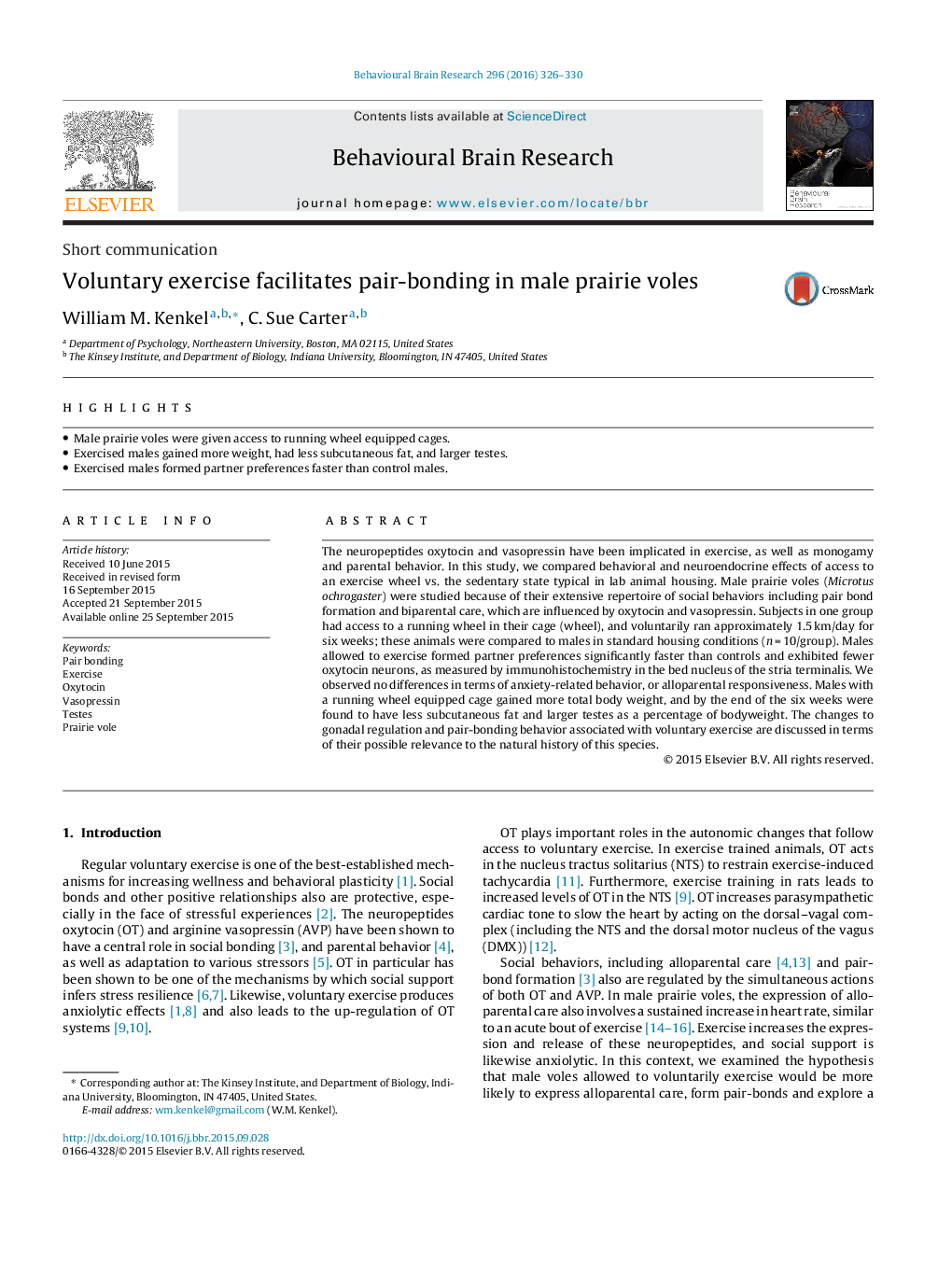| کد مقاله | کد نشریه | سال انتشار | مقاله انگلیسی | نسخه تمام متن |
|---|---|---|---|---|
| 4312365 | 1612936 | 2016 | 5 صفحه PDF | دانلود رایگان |
• Male prairie voles were given access to running wheel equipped cages.
• Exercised males gained more weight, had less subcutaneous fat, and larger testes.
• Exercised males formed partner preferences faster than control males.
The neuropeptides oxytocin and vasopressin have been implicated in exercise, as well as monogamy and parental behavior. In this study, we compared behavioral and neuroendocrine effects of access to an exercise wheel vs. the sedentary state typical in lab animal housing. Male prairie voles (Microtus ochrogaster) were studied because of their extensive repertoire of social behaviors including pair bond formation and biparental care, which are influenced by oxytocin and vasopressin. Subjects in one group had access to a running wheel in their cage (wheel), and voluntarily ran approximately 1.5 km/day for six weeks; these animals were compared to males in standard housing conditions (n = 10/group). Males allowed to exercise formed partner preferences significantly faster than controls and exhibited fewer oxytocin neurons, as measured by immunohistochemistry in the bed nucleus of the stria terminalis. We observed no differences in terms of anxiety-related behavior, or alloparental responsiveness. Males with a running wheel equipped cage gained more total body weight, and by the end of the six weeks were found to have less subcutaneous fat and larger testes as a percentage of bodyweight. The changes to gonadal regulation and pair-bonding behavior associated with voluntary exercise are discussed in terms of their possible relevance to the natural history of this species.
Journal: Behavioural Brain Research - Volume 296, 1 January 2016, Pages 326–330
